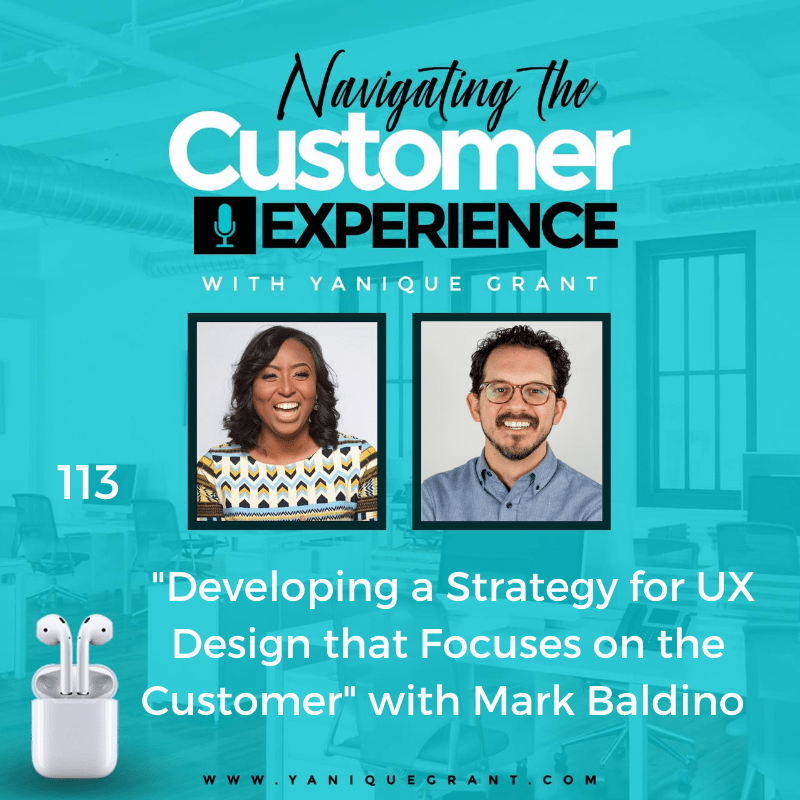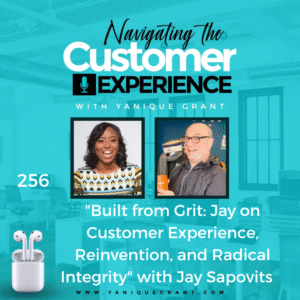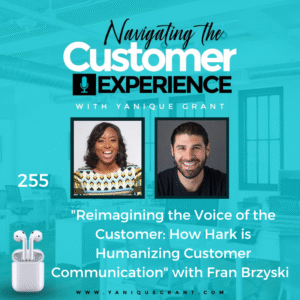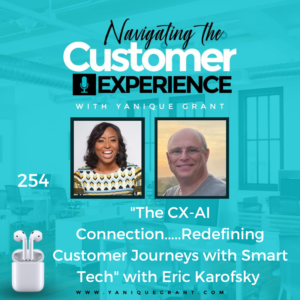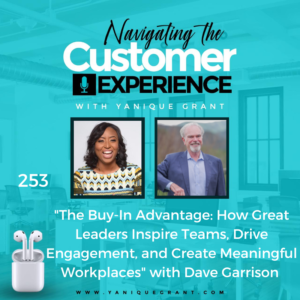Mark Baldino is a design industry expert with over 20 years in UX and Human-Centered Design. He’s a co-founder of Fuzzy Math, an award-winning UX design and innovation consultancy located in Chicago with clients worldwide. Along with building and sustaining a 20-person design studio, he’s helped build and train UX teams for some of the largest companies in the world. Fuzzy Math’s call to action “Do good work. Be good people” is embedded in all of Mark’s work as he advocates for “goodness” in design: producing work we are proud of as designers and that positively impacts the lives of those who use digital products and services every day. Mark has led projects across complex and regulated industries including Allstate, Hyatt Hotels, Microsoft and GE Healthcare.
Questions
- Your bio said that you’re a UX and Human-Centered Design Organization, Fuzzy Math. But maybe give us some background behind why you decided to name the company that and just how you got into what you’re doing today.
- Customer experience, user experience, user design, those words sometimes are used interchangeably in navigating different experiences for customers across different industries. Could you share with us what is so different about what you guys do that really helps to enhance the customer’s experience?
- Let’s say, for example, you’re looking at your strategy for 2021 coming out of this year that we’ve all had, that has been extremely different from any other year we’ve all experienced. How would you demonstrate or justify the return on investment of focusing on UX? Why is it important? How is it really going to transform your business? Why should you give attention to it as you would give attention to any other budgeted item for your business plan?
- Could you share with us one or two things that a company should take into consideration in managing their digital spend in the age of COVID?
- Could you share with us how do you stay motivated every day?
- Can you share with our listeners what’s the one online resource, tool, website or app that you absolutely can’t live without in your business?
- Could you share with us maybe one or two books that have had the biggest impact on you, maybe a book that you’ve read recently or a book you read a very long time ago, but it definitely had a great impact on you.
- Can you share with us what’s the one thing that’s going on in your life right now that you’re really excited about? It could be something that you’re working on to develop yourself or something you’re working on to develop your people.
- Where can listeners find you online?
- Do you have a quote or saying that during times of adversity or challenge, you’ll tend to revert to this quote, kind of helps to get you back on track or just keep you focused. Do you have one of those?
Highlights
Mark’s Journey
Mark stated that Fuzzy Math is a unique name, it served them well for the past 11 and a half years. The term Fuzzy Math, it does mean something in the real world, for them it speaks about the duality of the work that they do in the user experience and human centered design processes.
So kind of the fuzzy part is they’re working with humans and they’re trying to understand them and they are complicated and complex and sometimes they say one thing and do another. So it can be hard to design products and services to meet their needs. And the way they do that is kind of the math side, which is a little bit more of the robust process they follow sort of a thorough user center design process they lead their clients through.
It kind of makes sense of what humans are saying and doing and allows them to build products that better meet their needs. So it’s kind of the analytics and process side, which is the math solving for the human psychology and fuzzy side, which is the humans.
What Fuzzy Math Does to Enhance the Customer’s Experience
Mark shared that their process is about putting customers or users at the center of everything they do. So, one of the reasons they use the term “User” is because it really focuses in on their use of a specific, in their case, they’re designing a lot of web based applications or mobile applications.
Customer can mean a lot of different things to a lot of different people and so you thinking about customers from the brand perspective, from a marketing perspective, business perspective, and they try to get a little bit more narrow and think about who is this human sitting in front of a computer and what are they doing every day?
And how do we make their experience more efficient and effective and satisfying for them?
And that doesn’t always take into account the brand, for example, which again, brand and customer get aligned a lot. They try to break that out, they don’t think in terms of brands, if they’re working for a company that is a brand, they’re really thinking about, what is this person’s experience with your product and with your service and how can they architect it to better meet their needs?
And so, it’s really about putting a user at the center of everything that they do and advocating for them and their needs. And that sometimes pushes against what might make the most sense from like a sales or a marketing perspective.
And that’s okay, there can be a natural tension between those. But for their purposes, it’s let’s give users a voice at the table here and advocate for their needs, which might push against some other considerations of a business.
So it’s a slightly narrow lens to focus it on and really say who is this human being that, again, is sitting in front of a computer, has to use this digital product and service and how can they make them happier people, while they’re using these products.
The Importance of Using UX to Transform Your Business
Mark shared that he would think that the year that everyone’s just had really, really gives them a sense of why they should be investing in digital.
So you can take healthcare, for example. But you could say the same for some retail, that’s brick and mortar, maybe a higher education.
So healthcare and higher education, they have two things in common, which is they have these large, vast physical spaces that they’ve invested billions of dollars in.
A hospital in 2020 looks nothing like a hospital did in 1980. They are gorgeous structures; they look more like hotels.
And so, the idea is when you step in, that experience that you get when you enter the atrium of a modern hospital is supposed to give you a sense of what’s going to happen behind the scenes, behind the doors, is this amazing high tech, high touch.
Again, it almost feels like you’re stepping into a luxury hotel and that’s how you want to be treated. Well, guess how many people were using those front doors during COVID? No one.
Hospitals were busy, but they were not coming through the front doors and stepping in and getting a sense of this is where I want to spend money, it was much more from an emergency perspective.
But instead, the digital front door of hospitals became the center point, and hospitals that had invested in 2019 and previously in their digital front door were much better positioned to handle kind of customer service, user experience, patient services, provide those in a much more effective and meaningful manner. And so, if you invested in 2019 or before, let’s say that that dollar you spend in 2019 was worth ten times as much in 2020 and nothing to say it’s not going to be just as valuable moving forward.
So the idea is that people are experiencing brands and products or services overall, they’re experiencing digital first or have experienced digital first and a lot of people are digital, they live digitally, they think that that’s a normal thing. But you have to think of these industries where there was a physical component to it and they had invested in that physical component.
And now, you’re not taking a college tour and deciding on a college based on how fancy the building is, you’re probably making that based on what the digital experience you’re going to get and whether you can tell that they’ve actually invested in that in that digital experience.
So, even though he thinks we saw a lot of budgets get tightened in 2020, given uncertainty, what we’ve seen in this quarter and what we’re expecting to continue to see in Q1 is that those budgets are getting reoriented towards kind of the digital experience. And so, he actually thinks it’s kind of an easy sell, it’s not one that he has to make. But he thinks for people internally is to say…..
“If we haven’t invested in our digital infrastructure, now is the time if we want this business to be sustainable, we can also have to shift maybe the organization overall towards spending more on these digital first experiences and not maybe spend as much in something like physical infrastructure.”
Mark Baldino
Me: Agreed. Great. So that definitely will allow people to have greater justification for why they need to make this type of investment and, of course, how it will impact their business in the long term.
Managing Your Digital Spend in the Age of COVID
Me: Now, let’s say, for example, we have a business and they’re looking to go into this. What are maybe one or two ways that you think you could probably suggest to them that they could be able to better manage their digital spend in the age of COVID. Because a lot of people feel like they’re in contracting mode. I’ve listened to many podcast interviews and I know a lot of organizations that would have done a year in planning in terms of what they’re going to invest into, they’re now doing short term plans like three months, six months, because they just don’t know what to expect.
So, with that in mind, maybe could you share with us one or two things that a company should take into consideration in managing their digital spend in the age of COVID?
When asked to share what a company should take into consideration in managing their digital spend in the age of COVID, Mark shared that he thinks they need to think short and long term, if you’re too narrow in your focus of this few months, he has heard that as well, “Hey, we have two months to make impact.”
You can only do so much in in two months. And so, they’re helping a lot of their clients with is put roadmaps in place which allow for a strategic view, which is three years out, even if there’s a large amount of uncertainty in said industry. But that has a really tactical, they’re doing two to three month chunks of work. So what can they accomplish in a short term that’s going to move the needles and some KPIs. But what is their vision for the longer term. And inside of that, something that they don’t do a lot of crisis management for their clients, but all of their clients and frankly, all human beings went through a crisis this past year.
And he doesn’t mean to say that we’re going to experience another one, but there’s nothing to say that this couldn’t happen again in two years down the road. So, while you’re thinking strategically long term, while you’re solving stuff in the short term, you need to invest in an infrastructure that’s going to allow you to pivot quickly during a point of crisis.
Again, he hates to go back to the healthcare example, but it’s an easy one these days. A lot of websites and customer service teams were very unprepared for the deluge of visitors.
In some cases, he heard 3000% increase in web traffic. So that’s the technical architecture going to support that but can we respond to that many requests?
And so, this shouldn’t be a poll that is a blip on the radar for 2020, people need to invest in crisis management and how they can respond and how their digital products and services respond during a crisis like this.
So, again, they’re trying to map out what the long term improvements to customer experiences are over a 3-year period, they’re trying to help their clients adjust and make some changes incrementally along the way that are going to move the needle in a two or three month time frame and start to think about what it looks like when a crisis hits again and how teams responds and how technology responds and how we can utilize technology to respond during those points of crisis.
How Mark Stays Motivated
Mark shared that fear is a big motivator, just to be quite honest, he thinks in 2020. It is this sense of fight or flight; you need to keep the business going. It’s not a great long term motivator because it just wears you down a little bit.
So, he tries to spend time away from his computer and that keeps him motivated to get back to the computer. He works a lot with his hands, crafts, furniture building, light construction, it’s a lot less cerebral and it’s a lot more physical.
And he finds it when he’s able to step away from the computer and start to work on physical products or physical projects, he yearns to be back in front of the computer because there’s something about the amount of change you can influence or impact through the work that they do as designers. And that’s really, really powerful. And it’s not just about him and a closet he’s building or a piece of furniture, that’s personally rewarding for him. And he enjoys that.
But a lot of the products they work on are with bigger businesses and thousands, sometimes hundreds of thousands of people are using these tools every day. And there’s a lot of power in being able to make those tools more satisfactory and joyful for humans. And so, this kind of this exponential push that they can make in people’s lives through the tools that they redesign but sometimes when you’re so focused on what’s the next sale they’re going to make? He does primarily sales at Fuzzy Math these days, he doesn’t do a lot of design himself. You sort of miss that larger picture. So, to stay motivated, he gets away from the computer, he works in the in the physical world, and then that really pulls him back to the computer because he can get just a different perspective on what it is they do it Fuzzy Math and how they’re helping people.
App, Website or Tool that Mark Absolutely Can’t Live Without in His Business
When asked about an online resource that he can’t live without in his business, Mark shared that it’s going to sound standard, but email. He’d love to say Slack, but his team loves Slack as a digital tool, he thinks it’s enabled the business to function better specifically remotely. But as many times as people try to remake email and make that experience better, there’s a reason we all use it, it’s very easy, it’s quick to communicate with people. And so, it’s a boring answer but it’s where he’s at almost every minute of every day is in his inbox and he uses it as a way to manage tasks and to do’s, kind of a zero inbox person. He has a number of ways and filters to clean his inbox and make it an efficient mechanism for me.
But he has been using it since AOL, so early 90s. He has been using email for a while. He is very comfortable with it and he can be a creature of habit sometimes and it takes a while for him to shift into something else. As boring as it sounds, he feels like email is consistent and for him it’s something he can always rely on as a tool to know what’s coming into his business, what’s going on in his business and what does he need to do every day. So, maybe not the most inspiring answer, but it’s an honest one. If you ask him what he can’t live without at this point, it’s email.
Me: Definitely, don’t feel bad about sharing email because it’s important. And it’s an excellent communication tool and it does definitely allow for some level of accountability, paper trail you can go back in. I’ve pulled up emails that I’ve sent to people from three, four or five years ago just to make reference to maybe a conversation that was had that maybe you just need to bring back to the forefront based on what you’re moving on with currently. So it really, really is an excellent resource. So I’m not going to negate your application.
Books That Have Had the Greatest Impact on Mark
Mark shared that there are two books that have probably had the biggest impact on him. The first is Managing Professional Service Firm by David Maister. It’s an old book, the 90’s. It has been updated a number of times. It basically gave him all of the tools to build a professional services firm and how to think about his team and himself and leadership structure and consulting in general. A lot of consultants started as practitioners, he did. And they built consultancies because there’s work out there. But running a business is very different from doing design work and so, Managing Professional Services Firm, he calls it his Bible in terms of if he has a question, he goes there first.
He spent a few months in Argentina last year during the winter to escape awful Chicago winters and he read Let My People Go Surfing, which is by the founder of Patagonia. And that’s just a fantastic book, it’s part bio, which is just great to understand how and why Patagonia was founded. But also there’s a business component to it and how you can run kind of an ethical business and what you can look out for and how you can guide your company and he’s a firm believer in the ethos and values that Patagonia sort of imbues in its products and services.
But there’s a real honesty to the book in terms of, in a perfect world, no one needed more clothes and Patagonia would go out of business and they don’t hide from that fact, they sort of explain it.
And so, he just found it a really refreshing read and he thinks people that like that book, he thinks are people that he would kind of enjoy in the real world to talk to.
So it’s been kind of a book that he keeps an eye or an ear out for if people have read it, because he thinks that if they read it and enjoyed it and found value in it, they probably have a similar set of values to him and those can be some of the best of friends, first of all, but kind of professional relationships when there’s a bit of a value overlap.
What Mark is Really Excited About Now!
Mark shared that internally and it’s about developing their people. They’ve started a (DEI) Diversity, Equity and Inclusivity initiative at Fuzzy Math, it’s about 18 months old and that’s by far been the most rewarding part of 2020, because they made a lot of progress there. The initiative was not started because they had a crisis of diversity, equity and inclusivity on the team, it was because people thought that there was room that they could grow as a firm, even as a team of 20.
And so, two employees came to them and said, “Hey, we think we should invest time and energy into this, that there’s some room for growth here.” And Ben, is his business partner and him, “Okay, what’s kind of what’s the plan? Help us along here.” They eventually brought in a third party consultant who’s been a tremendous resource for them.
And it’s really reoriented how he thinks about growth at the company and proper growth and their role potentially in equity and inequality in the design industry, how they hire people and retain them, how they can maybe train people who don’t have a formal background in what they do, how they can create apprentice and mentorship internship programs.
And they’ve been doing all of this, but they haven’t done it with the lens of DEI and obviously this past year there’s been worldwide attention specifically through Black Lives Matter and they started the process ahead of that but it really it dovetailed well as it there was a specific focus on it globally and certainly in the United States. And for them to have a forum for their team to communicate about their concerns and then be able to plan for what the future looks like.
So, they have a two-year roadmap for how they’re going to improve DEI at Fuzzy Math and it’s not just a one stop shop, they didn’t just write a DEI statement and put it on their website. In fact, it’s not on the website yet because they are taking a very thorough, kind of methodical approach to this.
And it’s a long term change of the composition of the people at Fuzzy Math and their backgrounds. How you can have a voice at Fuzzy Math, what hiring, retention, growth and career paths. A lot of things he didn’t put in the DEI bucket; his team did because they felt that they were important in terms of communication from the founders down to the team.
So it’s been a tremendous learning experience for him, it’s been great to see because it’s been team led, his team has driven this and that’s super rewarding as a business owner to see people care so much about but the company and more specifically about each other, to want to invest time and energy into DEI.
Me: Sounds good. Okay, so we will definitely be following that journey eventually when it becomes public. And you may serve as a benchmark for other organizations that may want to take on that same kind of initiative.
Where Can We Find Mark Online
Website – www.fuzzymath.com
Mark shared that if you go to the resources section on their website, there’s a newsletter, encourage people to sign up for the newsletter. They don’t spam you. They send out one new sort of newsletter every month, which includes a topic of their interest. Sometimes it’s is very specific to design and designers.
Recently it’s been about kind of the business value of design and the ROI of design. And then they include some links and articles that they have read in the past month that they enjoy. They have the benefit of living and breathing UX every single day, and not everyone has that, so they try to pull some resources together for people.
If people want to reach out to him, his email is mark@fuzzymath.com, he’s happy to answer emails, chat, schedule, some time to connect, whether it’s about starting a career in design or whether you have a potential project.
Quote or Saying that During Times of Adversity Mark Uses
Mark shared that he doesn’t really have a quote, there’s just sort of saying, he doesn’t know where it’s attributed to, it’s around, do you have a strategic plan?
Yes, it’s called doing things. He thinks people sometimes worry too much about strategy and less about execution and has tried to make his career about kind of execution and doing and he considers himself a bit of a doer.
So, it helps him when he’s thinking about where Fuzzy Math’s going to be in 5 years or 10 years, people sometimes ask that question and he doesn’t always have a clear picture, he just has to remind himself that they just have to continue doing what they’ve been doing for 11 ½ years, it’s made them successful, bunch of happy clients and happy users along the way.
So, if you’re ever concerned about what to do next, just do. Start creating, start building, don’t spend too much time thinking or planning because execution is all that matters at the end of the day.
Please connect with us on Twitter @navigatingcx and also join our Private Facebook Community – Navigating the Customer Experience and listen to our FB Lives weekly with a new guest
Grab the Freebie on Our Website – TOP 10 Online Business Resources for Small Business Owners
Links
- Managing The Professional Service Firm by David H. Maister
- Let My People Go Surfing: The Education of a Reluctant Businessman by Yvon Chouinard
The ABC’s of a Fantastic Customer Experience
Do you want to pivot your online customer experience and build loyalty – get a copy of “The ABC’s of a Fantastic Customer Experience.”
The ABC’s of a Fantastic Customer Experience provides 26 easy to follow steps and techniques that helps your business to achieve success and build brand loyalty.
This Guide to Limitless, Happy and Loyal Customers will help you to strengthen your service delivery, enhance your knowledge and appreciation of the customer experience and provide tips and practical strategies that you can start implementing immediately!
This book will develop your customer service skills and sharpen your attention to detail when serving others.
Master your customer experience and develop those knock your socks off techniques that will lead to lifetime customers. Your customers will only want to work with your business and it will be your brand differentiator. It will lead to recruiters to seek you out by providing practical examples on how to deliver a winning customer service experience!

